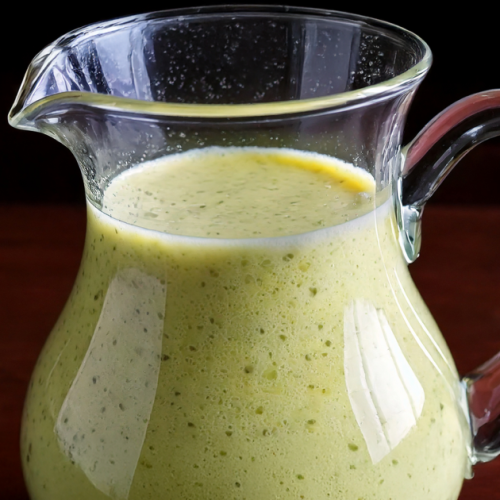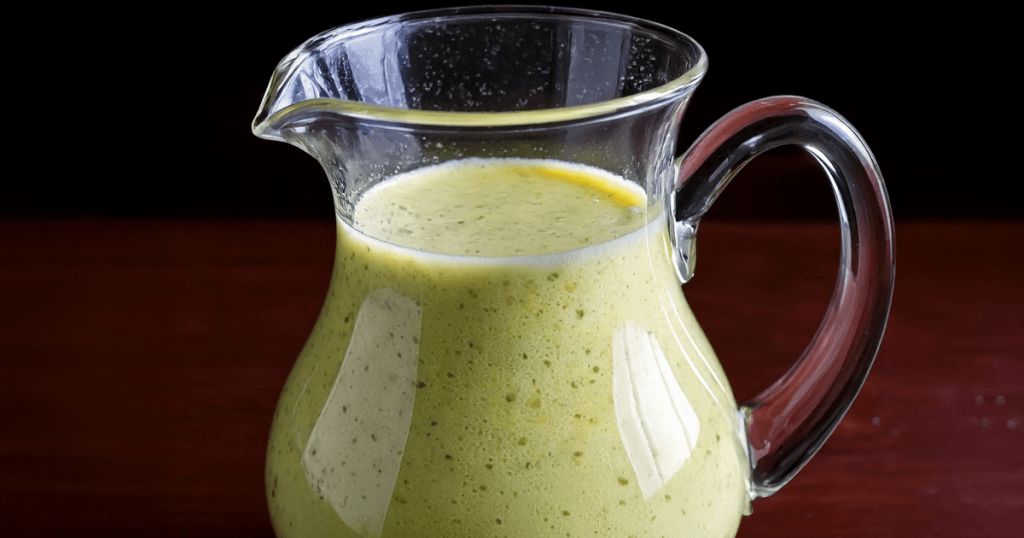Lebanese salad dressing offers a harmonious blend of Mediterranean flavors. This condiment is a perfect alternative if Syrian dressing isn’t quite your thing but you’re still craving vibrant Middle Eastern tastes.
Contents
Lebanese salad dressing recipe
Lebanese salad dressing is a staple in Mediterranean and Middle Eastern cuisine. The salad dressing combines olive oil, lemon juice, and garlic for a distinctive tangy and aromatic profile. Unlike heavy Western dressings, Lebanese dressing emphasizes freshness and natural ingredients.

I love how this dressing adds a burst of flavor without overwhelming the dish. It’s a perfect choice for a bright, Mediterranean-inspired meal. It’s perfect for grilled meats like lamb, chicken, or beef, and gives roasted veggies like eggplant or zucchini a fresh twist.
You can also use it as a dip for warm pita or flatbreads, or drizzle it over rice dishes like pilaf. It brings out the flavors in falafel wraps, shawarma, or even stuffed grape leaves.
It’s a must-have in salads like tabbouleh and fattoush and works great as a quick upgrade to any green salad. Even kebabs get better with a Lebanese dressing on top!
Here’s how to make the Lebanese salad dressing:

Lebanese salad dressing
Nutrition
Ingredients
- 1/4 cup fresh lemon juice about 1 large lemon
- 1/4 cup extra virgin olive oil
- 2 cloves garlic minced
- 1 teaspoon Dijon mustard optional
- 1 teaspoon maple syrup (or honey) optional, for sweetness
- Salt and pepper to taste
- 1 tablespoon fresh parsley finely chopped (optional)
- 1 tablespoon fresh mint finely chopped (or sumac for a tangy note)
Instructions
- In a bowl, whisk together the lemon juice, minced garlic, and Dijon mustard (if using).
- Slowly drizzle in the olive oil while whisking continuously until the mixture is well combined and emulsified.
- Stir in the honey or maple syrup if you prefer a touch of sweetness.
- Season with salt and pepper to taste.
- If desired, add the chopped parsley and mint for extra freshness and flavor. (Or use sumac for a tangy note)
- Serve immediately or refrigerate in an airtight container for up to a week.
Notes
- 1/2 cup of dressing is enough for about 4-6 servings (depending on how much dressing you like on your salad).
- Keep in an airtight container in the refrigerator for up to a week. If the olive oil solidifies when chilled, let it sit at room temperature until it liquefies again before use.
Variations
Here are some other variations of Lebanese salad dressing:
- Ground Sumac Version imparts a citrusy flavor that enhances the lemon juice. It’s a staple in both the dressing and as a garnish.
- Pomegranate Molasse Adaptions adds sweetness and depth, balancing the acidity of lemon juice. It’s frequently found in dressings for Arabic salads and Fattoush.

- Fresh Herb Additions incorporate parsley or cilantro for a fresh dressing.
- Za’atar Version adds a blend of herbs such as sumac, thyme, and sesame seeds for an aromatic twist.

Very flavorful and taste amazing…I made the recipe exactly as stated but it came out runny-liquified unsure why it’s not as creamy as the picture looks. It’s so good I want to make it again! do you have any suggestions to make it thicker/creamy?
Hi Gina,
Happy you love the recipe. To make it creamy, you can add 2-3 tablespoons tahini or 1/4 to 1/2 cup of plain yogurt. Just add 1 tbsp at a time to reach the creamy level you need.
Mine came out super garlicky. I’ll have to cut it in half next time. Thanks for the tip about adding some yogurt to make it creamy.
I’m glad you like it!
How much sumac or zaatar do you sub?
If you’re using sumac, start with about 1 teaspoon and adjust to taste. For zaatar, use ½ to 1 teaspoon since it already has sumac plus herbs and sesame. Just add gradually and taste!